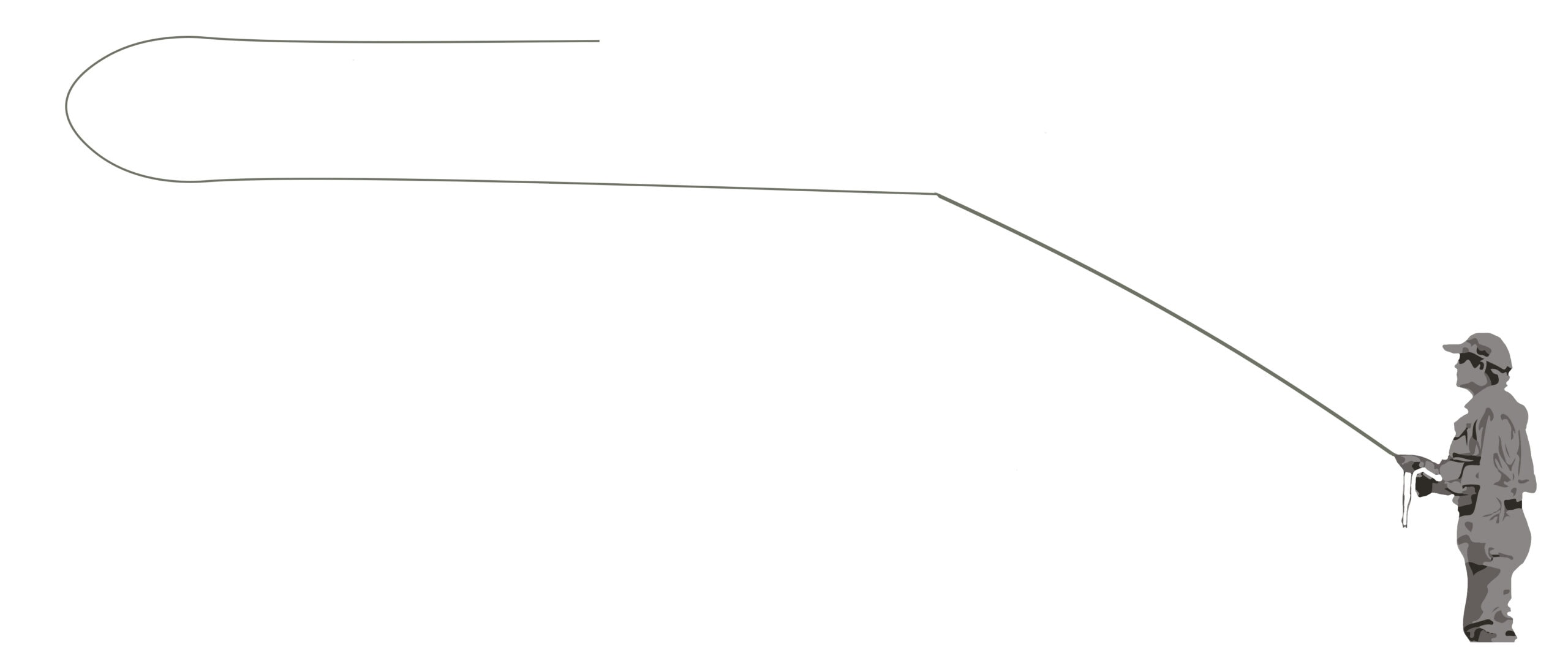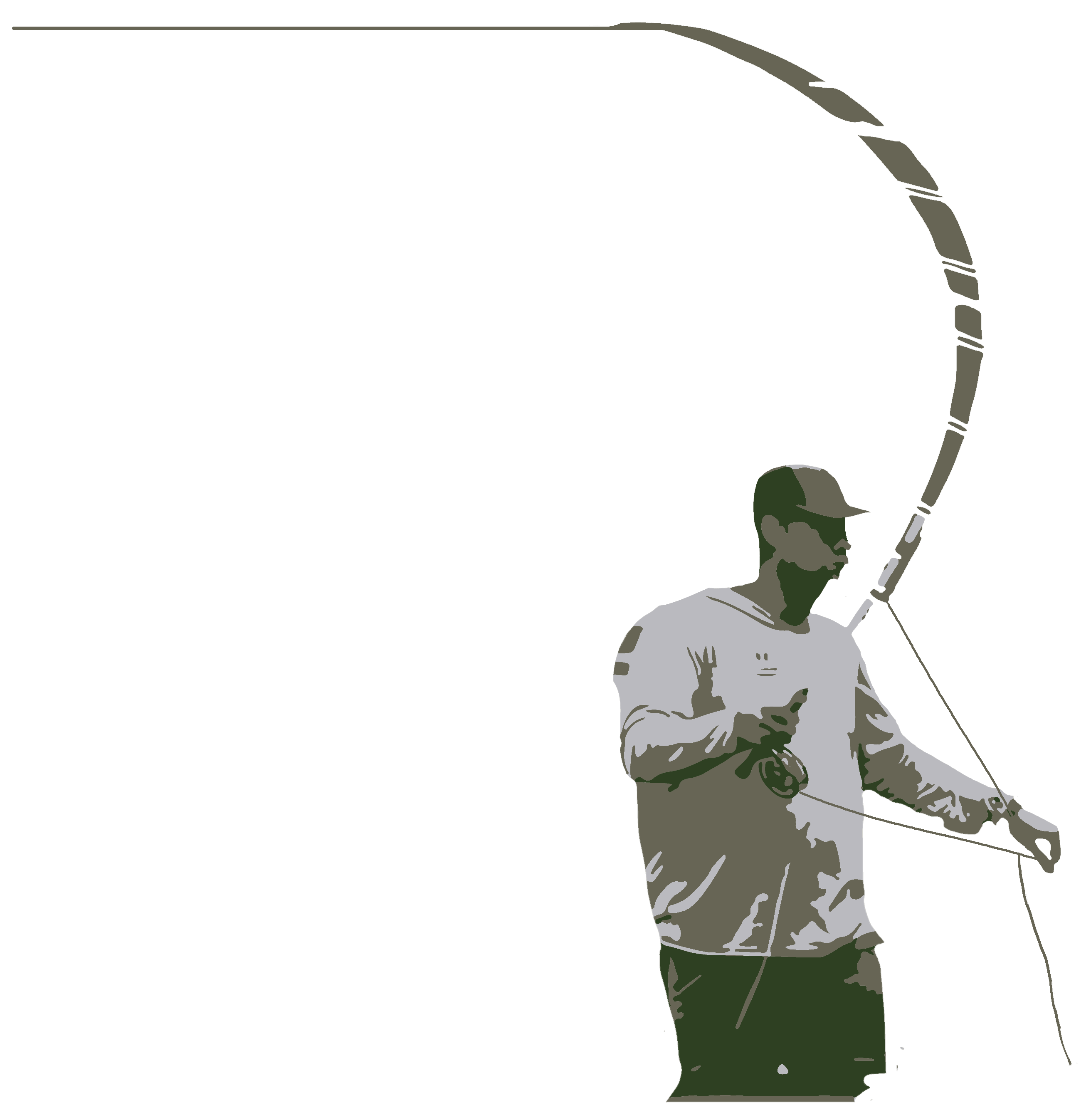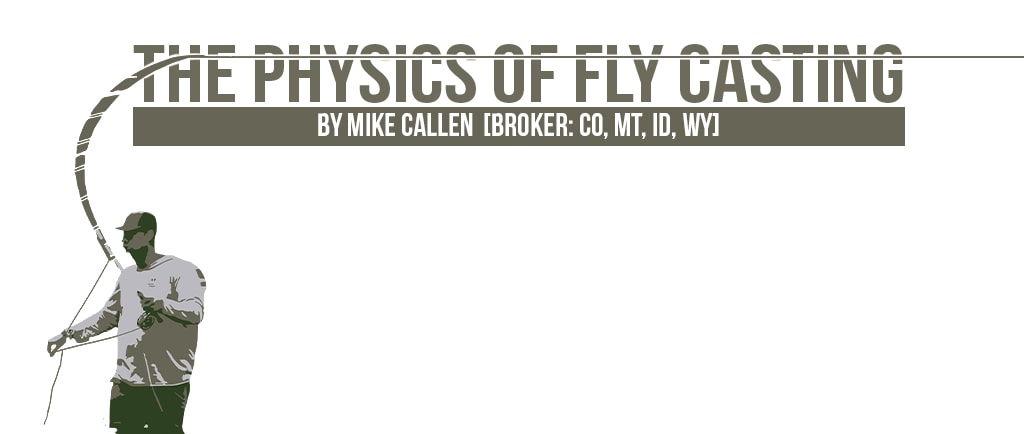Keep it on the straight and narrow- the physics behind fly casting.
You can spend a lot of money on a fly-fishing setup these days, like, A LOT of money; but none of that fancy equipment will equate to an effective fly cast if you don’t understand the physics of a fly cast, and apply it properly. The goal behind a good fly cast is to transfer energy most effectively from the rod to the line, which carries the fly to exactly where (and how gently) you want it to land. Many fly fisherman have a hard time making a long and/or accurate cast because the physics of their cast is working against them, trust me, I’ve seen it happen hundreds of times. Physics has taught us that objects travels fastest and most accurately in a straight line. The same holds true when it comes to the path of your fly and fly line. Keeping that fly line on a straight plane parallel to the ground/water (Fig. 1) is key to transferring the energy from your fly rod effectively to your fly line. The moment you allow the fly line to drop below that imaginary horizontal plane, (either on your forward cast or back cast) the energy is not transferred as efficiently to your fly line, and the effort required to keep that cast going becomes exponentially more difficult.

Figure 1: Keep the fly line as close to parallel to the ground/water as possible.
If you haven’t heard it before, imagine a large clock facing your casting arm. The starting and stopping points of your cast should be the 10 and 2 o’clock positions. Doing so will automatically create that flat horizontal plane that you want your fly line to travel along. Going outside of the 10 and 2 o’clock positions will allow your fly line to drop below that horizontal plane.

Figure 2: The stopping points on your forward cast and backcast (10 and 2 o’clock respectively); and having loops the mirror each other on both sides of the cast.
There are two things you can do to keep your fly line on that horizontal plane while casting; the first is to adjust the timing of your cast. Timing adjustments take practice and a little bit of feel, but the idea is to wait until the fly line has fully unfolded in front of you without letting the fly line drop towards the ground once it unfolds, then begin your back cast (and vise-versa). You will actually pause your cast for a brief moment at the 10 and 2 o’clock positions to allow your fly line to unfold. The length of the pause will directly correlate to the amount line you are casting with (anywhere from tenths of second on short cast to over a full second on longer casts). Second is to simply watch what your fly line is doing (or have someone else watch and provide you feedback). Many fly fisherman forget that their head is on a swivel. So while the forward cast may look okay (because they are observing it) the back cast may be a mess because they have no idea what that fly line is doing behind them. A bad back cast can have no other result than a subpar forward cast, it plain physics. Remember a good fly cast is symmetrical (Fig 2), so simply turn your head and watch your fly line on both ends of your cast (or have an observer watch your arm position, timing, and fly line travel, and provide you feedback as you make adjustments). Observing both ends of your cast will help your hand-eye coordination and will allow you to see if your fly line is indeed unfolding nicely while still staying up on that imaginary plane. As a side note, it’s also a good idea to just practice casting while looking behind you as many situations require an equally well place back cast as is the forward cast (e.g., a stream bank with high vegetation behind you).
The third key to a good fly rod/fly line energy transfer (i.e., distance and accuracy) is how quickly, and at what point in your cast, you accelerate and decelerate the fly rod to store and release energy. Let’s using driving a car as an example. When at a stop, you slowly and steadily press your foot on the gas pedal to accelerate, the same holds true when you start to bring your cast forward; nice and steady (Fig 3).

Figure 3: Smooth acceleration at the onset of bringing your cast forward.
Now here comes the most misunderstood part of a long and accurate fly cast. In order to effectively transfer the energy stored in your fly rod during your forward cast, your stop, or deceleration, must be crisp and quick. So, back to the car example again… slam on the brakes and anything unsecured in your back will immediately end up in your front seat due to momentum. Translated to fly casting, instantly stop your fly rod at the 10 o’clock position so energy transfered to the fly line happens instantly, and the fly line (and fly) will shoot forward as straight and as efficiently as possible. Following these procedure is what creates tight loops traveling in a straight line, which equals a consistent, accurate and long cast that is so necessary when fly fishing. Plus, an efficient transfer of energy from your fly rod means your arm is less tired and you can fish longer each day.
Mike Callan is a licensed broker Colorado, Montana, Idaho and Wyoming, and is a former Federation of Fly Fishers Certified Fly Casting Instructor and fishing guide in Colorado & Alaska; and a manufactures sales representative for some of the finest fly-fishing companies in the world. Mike can be reached at mike@sjsportingproperties.com or by phone 970.406.8335.




